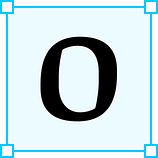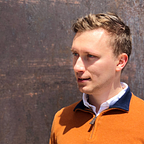Crushing the remote product design interview
Tips on how to navigate the job search and land your next gig
 Over the last few months the design interview landscape has shifted. With many (if not all) companies going remote, the interview process is now fully remote as well. This means some of the previous tried and true interview types such as the app critique or the infamous whiteboard challenge are taking a back seat in favor of the take-home design exercise and the portfolio presentation.
Over the last few months the design interview landscape has shifted. With many (if not all) companies going remote, the interview process is now fully remote as well. This means some of the previous tried and true interview types such as the app critique or the infamous whiteboard challenge are taking a back seat in favor of the take-home design exercise and the portfolio presentation.
Although remote interviewing presents its own set of unique challenges, many of the same principles still apply such as taking stock of your skills first.
Before diving in…
Take a moment to reflect. Before dusting off that portfolio do a quick skill self-assessment. What parts of the design process are you strong at? What growth areas are you passionate about improving?
Do a cursory search online for product design roles. How do they match up with your self-assessment? By taking control of this process from the start you’ll feel more secure and grounded in your approach. Instead of finding a job, thinking of hiring a job.
Your requirements for a dream design job may change during your search. You may uncover additional data points about yourself. That’s helpful too. Listen to the new information but above all — be deliberate in your search.
As you start reaching out and applying, the next phase is usually an intro call with a recruiter.
Preparing your portfolio for the phone screen
The main goal of this interview type is to advance to the next round. Typically it’s conducted by a recruiter (or a hiring manager) to see if there’s a good match between your skills and the role. By this point, you should have a good starter portfolio and your pitch ready.
I know firsthand how hard it is sometimes to put a portfolio. It’s a daunting project with sometimes a perfectionist stakeholder — yourself. That’s why I’ve put together folio. It’s a quick start case study template to help you focus on the key things that hiring managers look for. Use this portfolio checklist to make sure you covered everything.
Aside from showcasing your work in the portfolio, don’t forget to infuse a little life by providing relevant personal tidbits that can help you further stand out from the crowd.
Interview them just as they’re interviewing you
Don’t forget, interviews are a two-way conversation. Sometimes it may not feel like it because you do most of the talking but in the back of your mind based on the questions, and the dynamic you should always be asking yourself if this is the right environment.
And when you do have those 5 to 10 minutes at the end—ask questions. This applies to all interview types. It’s better to run out of time asking questions than to have none at all . The latter implies you haven’t done your research and aren’t that interested.
Set yourself up for success in future interviews
At the end of the conversation — assuming you’re still excited about the role — ask about the next steps in the process. Usually, you’ll get a detailed follow-up from the recruiter. This should give you a clear idea of what to expect so you can prepare your portfolio accordingly.
Interview requirements shouldn’t be a surprise — if you still have questions, reach out to the recruiter.
Presenting your in-depth portfolio
Previously reserved for a final on-site this interview type is now remote. Many of the same tips still apply — you want to craft a compelling story and come across confidently leaning in on your public speaking skills.
Lead your audience
Don’t overburden your slides with text — show don’t tell. Lead with a few visuals. Entice your audience with a key visual (whether it’s a mock, a prototype or a flow) and provide additional context as you’re speaking. This helps you capture and direct the audience’s attention from your presentation, to you and back again.
Practice ahead of time
Time yourself before the presentation. Usually, a portfolio presentation is about 45 minutes to an hour-long. You should have enough buffer for questions but not so much that you end up finishing too early.
If your presentation runs longer than expected — consider moving some slides to the appendix instead. This is a good section to pull up at the end when answering questions or during the one on one interviews later.
Pause for questions
The remote interview can present a challenge when you’re not able to see your audience. Are they even there? So be sure to incorporate breaks in your presentation for questions. Be sure to also pause for a little longer.
Yes, those 10 seconds will feel like an awkward eternity but that’s ok — you want to give people enough time to hear you, think, formulate a question and find that unmute button which always happens to be hidden in plain sight.
Behavioral and one-on-one interviews
After the portfolio review you’ll typically encounter a mix of behavioral interviews and deep dives into your work. Depending on the company you may talk with:
- Product Managers
- Data Scientists
- UX Researchers
- Content writers
- Engineers
- Designers
These types of behavioral interviews aren’t too different in a remote setting. Be sure to have specific examples and responses ready. At times you may need to substantiate your responses with a portfolio. Now those extra slides in the appendix could come in handy.
After the interview
Post-interview, feel free to send out a thank you email. Ditch the generic format and make it specific to the role and based on your interactions with (potentially) your future coworkers. Reinforce why you’re still excited about the role and why you’d be a good fit.
The team will convene to make a hiring decision. This usually takes a few days and the recruiter will let you know when a decision will be made by.
Even if this is your dream job — don’t wait. Continue interviewing and looking at other places. Best case, you’ll get your dream job offer but in the worst case you’ll be able to quickly resume the interviewing process at another place.
Bouncing back after a no
Sometimes it may feel devastating to get a no at this stage of the process but I would reframe this as a learning opportunity. Reach out to the recruiter to see what you could’ve done better. Not all will respond and some will respond with a generic we-can’t-share-reasons-due-to-liability. Regardless, you won’t know until you reach out. Sometimes it might not be a good fit at the time due to budgets or another external factor.
Use this as an opportunity to sharpen your interview responses. Practice your presentation with a friend and have them grill you with tough questions. This will help you respond quickly, concisely with specific examples. I wrote a few more tips on how you can bounce back after a rejection.
And if it’s a yes…
Then the tables have now shifted in your favor. Use this opportunity to follow-up on your open questions and concerns — now you’re interviewing them. Don’t forget to negotiate your compensation package.
Good luck — you got this
Interviewing is hard. In a way it’s almost a special set of skills of how to properly present and sell yourself to an audience of strangers. That’s why I wrote a book about it, Land Your Dream Design Job. It’s a guide for new and experienced designers alike. It covers topics such as:
- What skills are expected of designers
- How to demonstrate those skills throughout the job search process
- How to identify your next opportunity
- How to target your job search process to stand out
- How to build a stand-out portfolio and tailor it to your dream opportunity
- The ins and outs out of various design interview types from portfolio presentations, whiteboard challenges, app critiques, to take home design exercises and many others.
If you’re interested in taking control over your process, reducing the heartache and making it productive—this book is for you.
